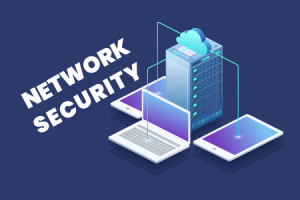Managed Service >> IT Infrastructure Security >> Network Security
 Network security is an immense help to private individuals and corporations when it is followed correctly. It complements endpoint security because it also helps strengthen network security in the long run. Network security is an organization’s strategy that ensures the security of its assets including all network traffic is secure.
Network security is an immense help to private individuals and corporations when it is followed correctly. It complements endpoint security because it also helps strengthen network security in the long run. Network security is an organization’s strategy that ensures the security of its assets including all network traffic is secure.
To assist you in better understanding this topic we have put together a short list of the different types of networks in use today, and how they are used. This is where your network security fundamentals start.
Personal Area Network (PAN)
A PAN is made up of a wireless modem, a computer or two, phones, printers, tablets, etc., and revolves around one person in one building. This is the smallest and most basic type of network. These types of networks are typically found in small offices or residences and are managed by one person or organization from a single device. Bluetooth is an example of a PAN.
Local Area Network (LAN)
Students learn about LANs in their first computer classes, and for good reason. LANs are the most frequently discussed networks and are the most common type in use today. LANs connect groups of computers and low-voltage devices across short distances (within a building or between a group of two or three buildings close to each other) to share information and resources. Businesses typically manage and maintain LANs.
Using routers, LANs can connect to wide area networks (WANs) to immediately and safely transfer data.
Wireless Local Area Network (WLAN)
You get this in almost every single cafe in town. It functions like a LAN. WLANs use wireless network technology, such as WiFi. Typically seen in the same types of applications as LANs, these types of networks don’t need devices that rely on physical cables to connect to the network. You can surf and browse the Internet with this. Coffee anyone?
Wide Area Network (WAN)
The Internet is the most basic example of a WAN, connecting all computers together around the world. A WAN connects computers together across longer physical distances. This can be more complex than a LAN. This allows computers and low-voltage devices to be remotely connected to each other over one large network to communicate even when far away from each other. Because of a WAN’s vast reach, it is commonly owned and maintained by multiple administrators. It is common to run connections over a WAN using VPN or other encryption technologies to remain secure.
Storage-Area Network (SAN)
As a dedicated high-speed network that connects shared pools of storage devices to several servers, these types of networks don’t rely on a LAN or WAN. Instead, they move storage resources away from the network and place them into their high-performance network. SANs can be accessed in the same fashion as a drive attached to a server. Types of storage-area networks include converged, virtual, and unified SANs. When you have a lot of data, SANs frequently pop up.
System-Area Network (SAN)
This term is relatively new within the past two decades. It is used to explain a relatively local network that is designed to provide high-speed connection in server-to-server applications (cluster environments), storage area networks (called “SANs” as well) and processor-to-processor applications. It provides a high-speed switched environment in which any device on the network can connect with any other device and communicate over a dedicated high-speed link.
There are other network types as well such as CANs (campus area networks) and MANs (metro area networks for larger coverage.
Start Your Network Security Fundamentals with thinkIT Solutions
With the different types of network security and different types of network setups from which to choose, businesses have a lot to consider when it comes to protecting their IT infrastructure. Network security is critical if companies wish to operate smoothly.
Optimize your network security fundamentals with thinkIT Solutions! Please contact us and we will be happy to review your network security needs
Know More Our Services:

